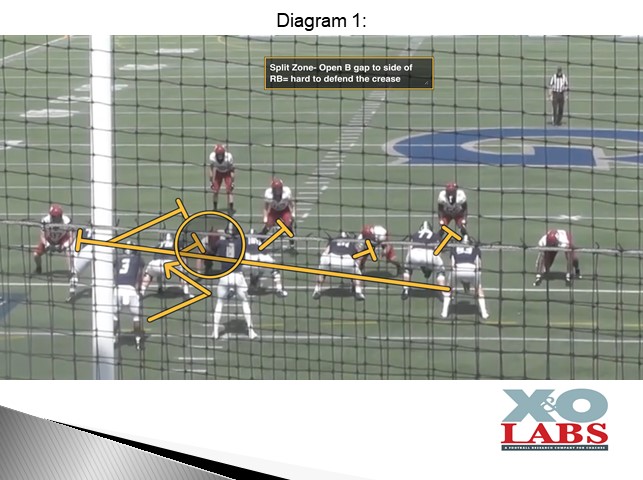By Mike Kuchar with Michael Horan
Defensive Line Coach
Harvard University (MA)
Twitter: @TheCoachHo
The genesis behind the idea started in working to defend the tight zone run game. Like most Even front defenses, Harvard would keep the 3-technique away from the running back. But the problem was, offenses were “riding the wave” of the ball carrier pressing hard to inside zone and cutting back in the crease.

So, the staff felt more stout if there was a 3-technique to the backside of zone. But rather than align in that positioning, the defensive staff at Harvard built in several calls- communicated by the second level- to alert defensive linemen what gap they are responsible for and more importantly what technique they should be using to get there. How it gets there will the focus of this clinic report.
It starts with always presenting an open B gap to the side of the back, at least pre-snap. But on the snap of the ball, that interior defensive tackle will work back into the B gap to take some heat off the defensive end who is responsible for the quarterback. “We want to make sure that the defender who is aligned in the A gap is not staying there,” said Coach Horan. “We are set up that if you want to run zone and you want to get double teams on our down guys you have to run same side zone (zone flop). If you don’t you’re going to have to find a way to run zone by single-blocking your Guards. And that is a matchup we feel great about.”
This is beneficial in two main ways: it puts a stop to the flow of the zone and it takes head off the zone side defensive end.
Communication Protocol:
Similar to split safety defense, Harvard segments its communication calls between both Tackles and Ends in its four-down front. The call is communicated by the support defender and echoed up front. “We split the line of scrimmage right down the middle and from there we talk about what the integrity is to that half of the line of scrimmage,” said Coach Horan. “We split our structure in half and our support players talk to the defensive line in front of them every play. The defensive line doesn’t have any idea what the call is. Better they don’t know, it makes them more programmable.”
One of the ways in which this system becomes more adoptable is by making sure a linebacker has a home position to dictate the call. “We got out of 30 technique alignments because of it,” said Coach Horan. For the most part, these home positions are based on offensive formation structure and will follow the progression below:
- 2x2 Formations- Mike is over the Center
- 3x1 Formations- Will is over the Center
- 3x1 FSL Formations- Sam is over the Center
The communication is made from box LB’s to both sides of the defensive line.
We’re going to take you through the each of these support calls and the defensive line techniques that are associated with each call.









